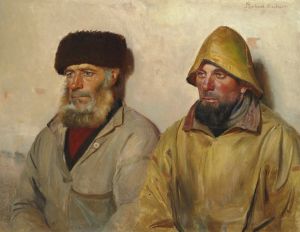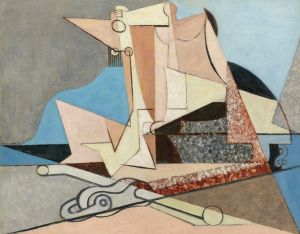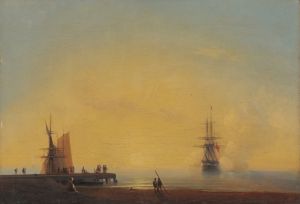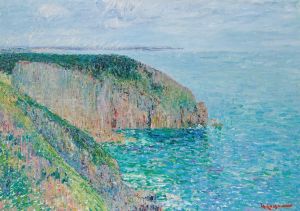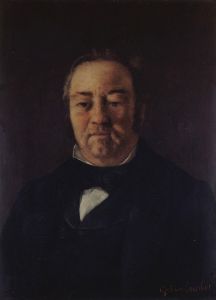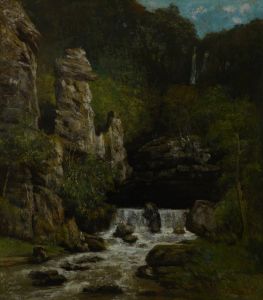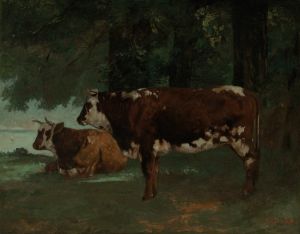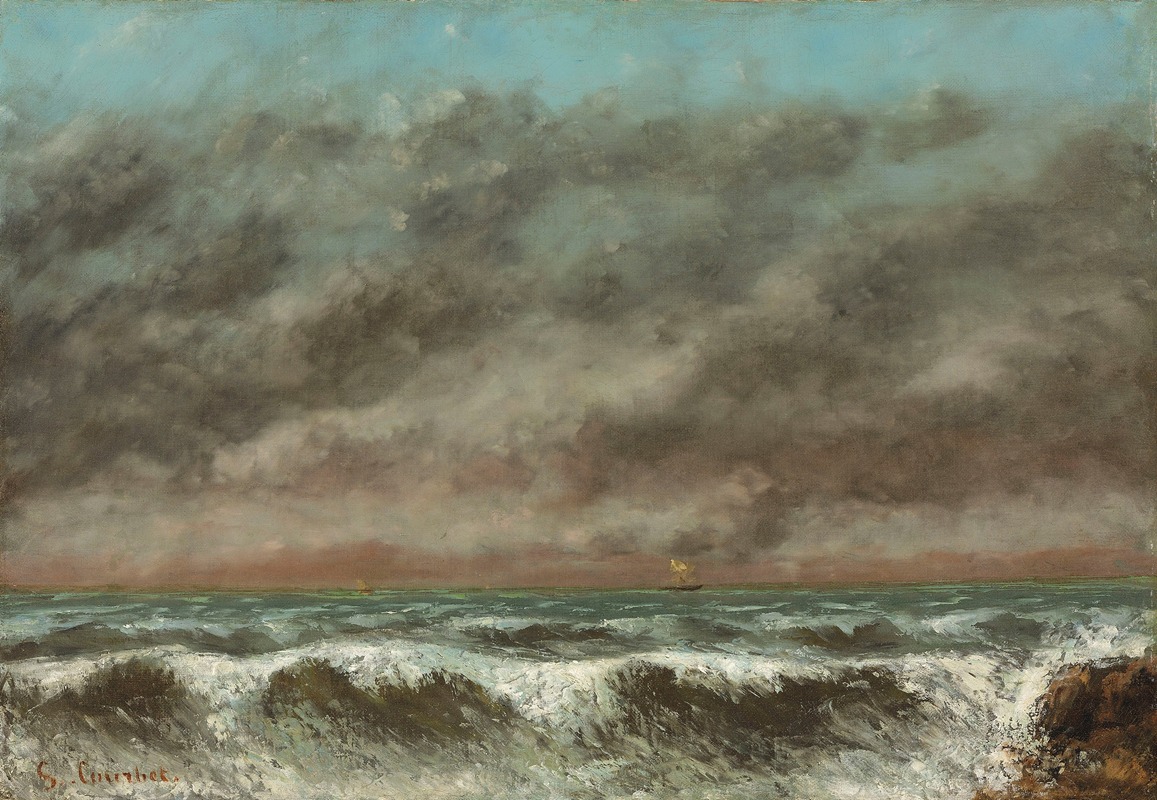
Marine
A hand-painted replica of Gustave Courbet’s masterpiece Marine, meticulously crafted by professional artists to capture the true essence of the original. Each piece is created with museum-quality canvas and rare mineral pigments, carefully painted by experienced artists with delicate brushstrokes and rich, layered colors to perfectly recreate the texture of the original artwork. Unlike machine-printed reproductions, this hand-painted version brings the painting to life, infused with the artist’s emotions and skill in every stroke. Whether for personal collection or home decoration, it instantly elevates the artistic atmosphere of any space.
"Marine" is a painting by the renowned French artist Gustave Courbet, who was a leading figure in the Realist movement of the 19th century. Courbet was known for his commitment to painting real-life subjects and his rejection of the idealized forms that dominated the art world at the time. Born in 1819 in Ornans, France, Courbet's work often depicted the everyday lives of ordinary people, landscapes, and seascapes with a focus on naturalism and authenticity.
"Marine" is one of Courbet's many seascapes, a genre he explored extensively, particularly during the latter part of his career. The painting captures the raw and untamed beauty of the sea, a subject that fascinated Courbet and aligned with his Realist principles. Unlike the serene and idealized seascapes of earlier periods, Courbet's marine paintings are characterized by their dynamic compositions, dramatic use of light and shadow, and textured brushwork that conveys the movement and energy of the ocean.
In "Marine," Courbet employs a palette dominated by deep blues, greens, and grays to depict the turbulent waters and overcast sky. The painting's composition is typically horizontal, emphasizing the vastness and power of the sea. Courbet's technique involves thick, expressive brushstrokes that create a sense of immediacy and physical presence, drawing the viewer into the scene. This approach reflects his desire to capture the essence of nature in its rawest form, unfiltered and unidealized.
Courbet's seascapes, including "Marine," were influenced by his travels to the coastlines of Normandy and the Mediterranean. These trips provided him with firsthand experiences of the sea's changing moods and colors, which he translated onto his canvases with remarkable fidelity. His ability to convey the atmosphere and texture of the marine environment set his work apart from that of his contemporaries and contributed to his reputation as a master of Realism.
The painting "Marine" exemplifies Courbet's skill in rendering natural scenes with a sense of immediacy and vitality. It also reflects his broader artistic philosophy, which sought to depict the world as it is, rather than as it should be. This commitment to realism was both revolutionary and controversial in Courbet's time, challenging the established norms of the art world and paving the way for future movements such as Impressionism.
Courbet's influence extended beyond his own work; he inspired a generation of artists to embrace realism and to find beauty in the ordinary and the everyday. His seascapes, including "Marine," remain celebrated for their technical mastery and their ability to evoke the power and majesty of the natural world.
In summary, "Marine" by Gustave Courbet is a significant work within the artist's oeuvre and the broader context of 19th-century art. It showcases Courbet's dedication to realism, his innovative approach to landscape painting, and his profound connection to the natural world. Through his dynamic brushwork and keen observation, Courbet captures the essence of the sea, making "Marine" a timeless representation of nature's beauty and power.







